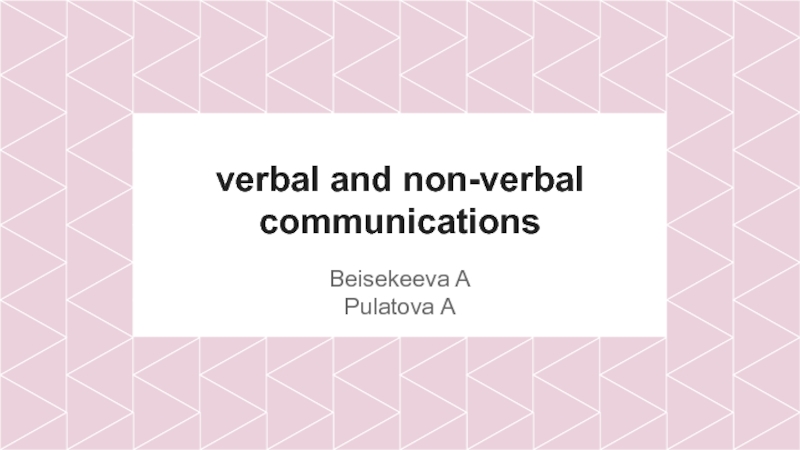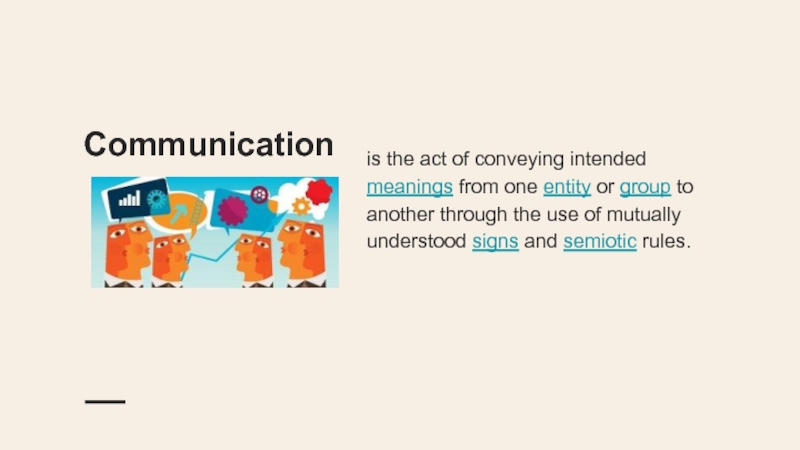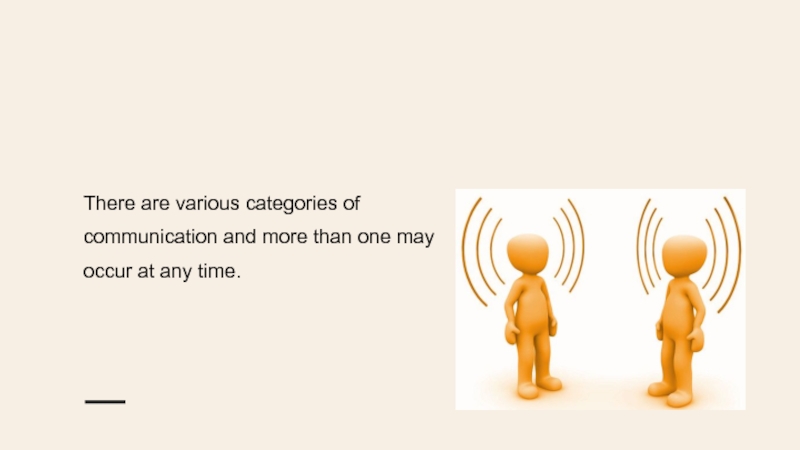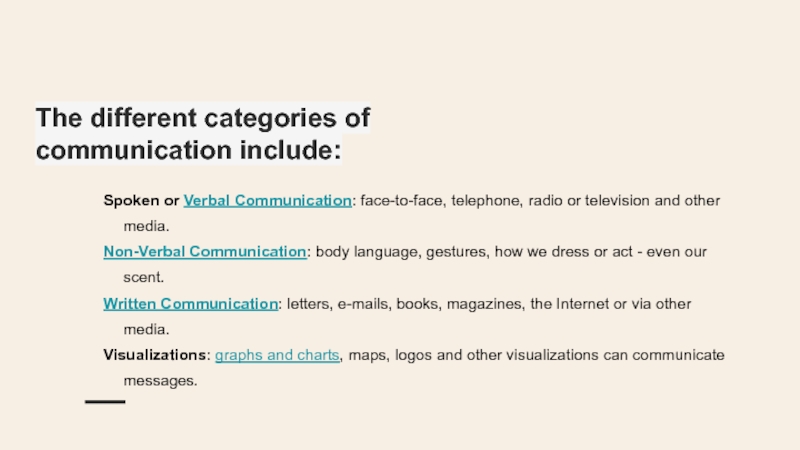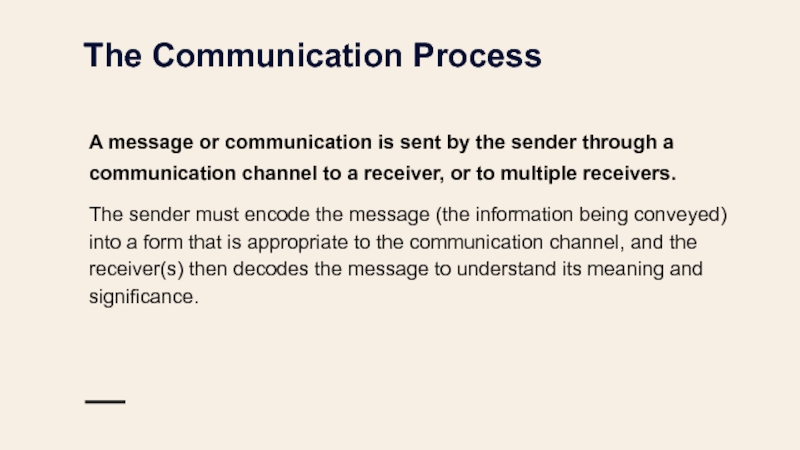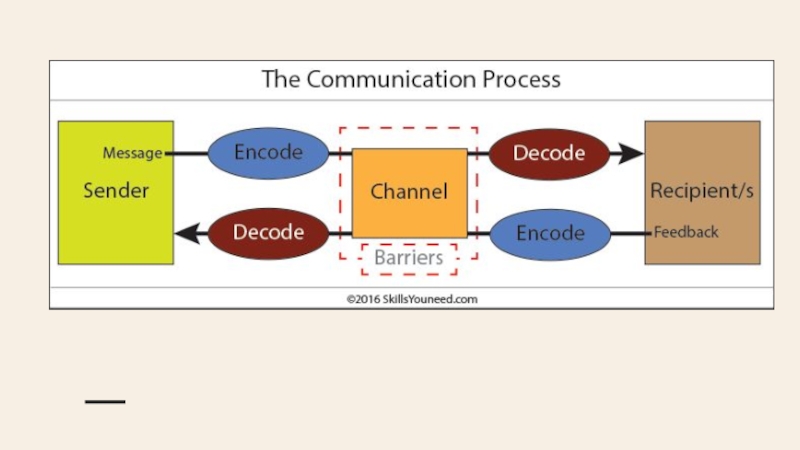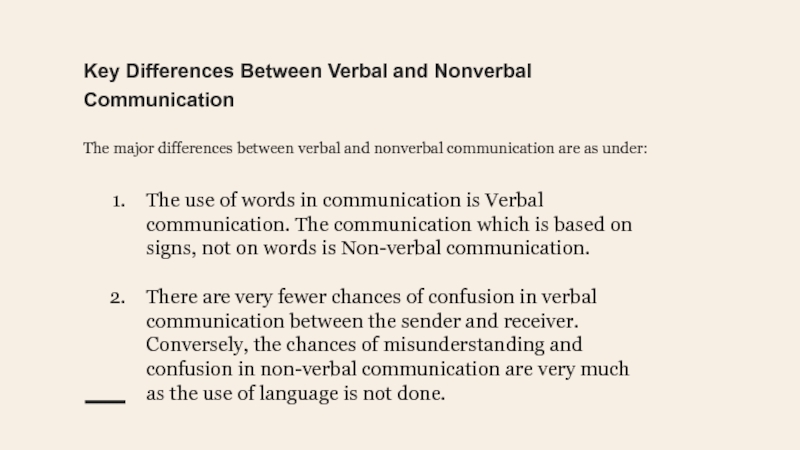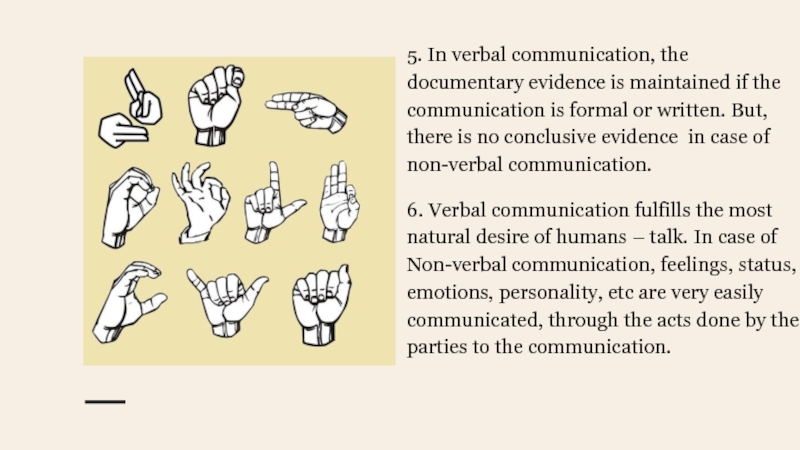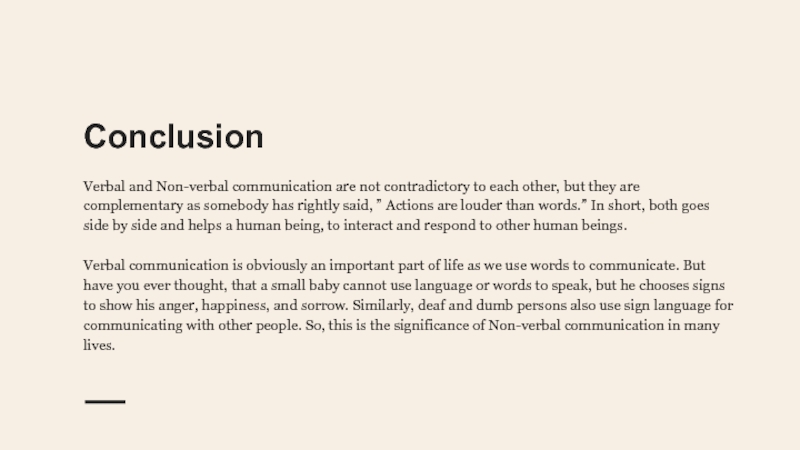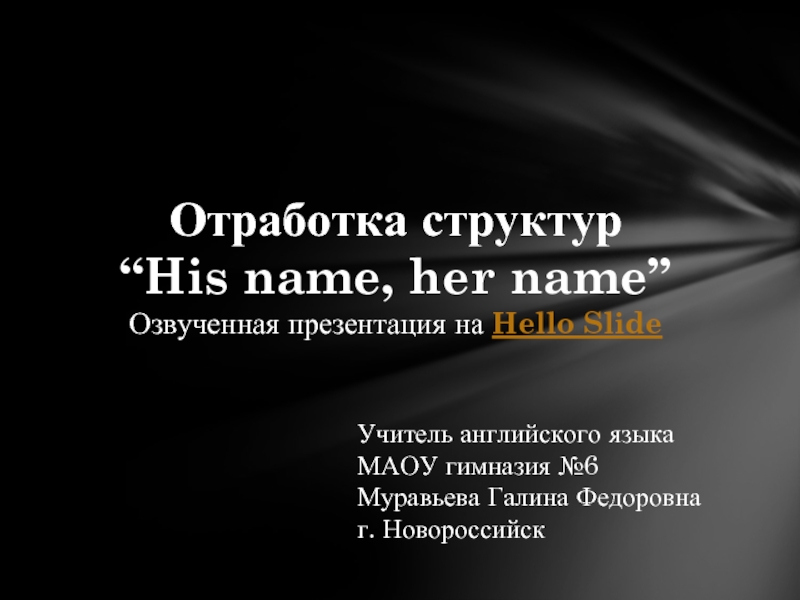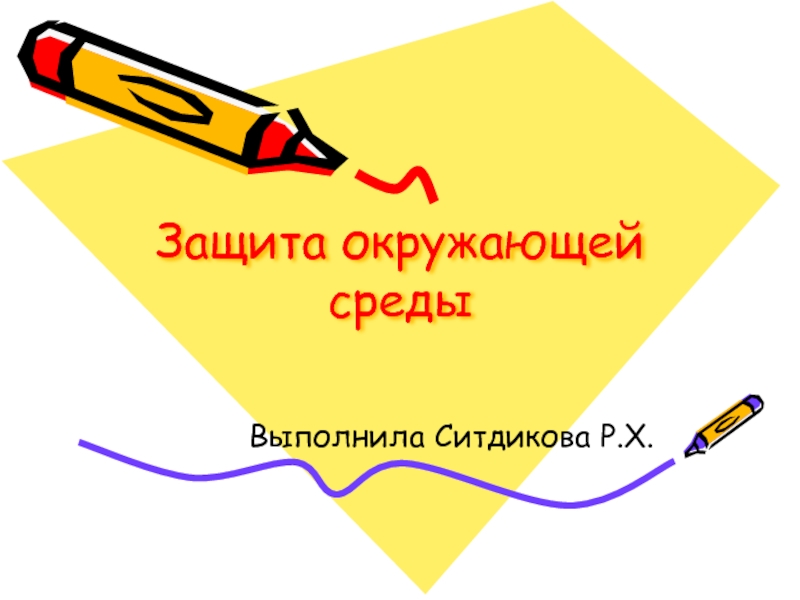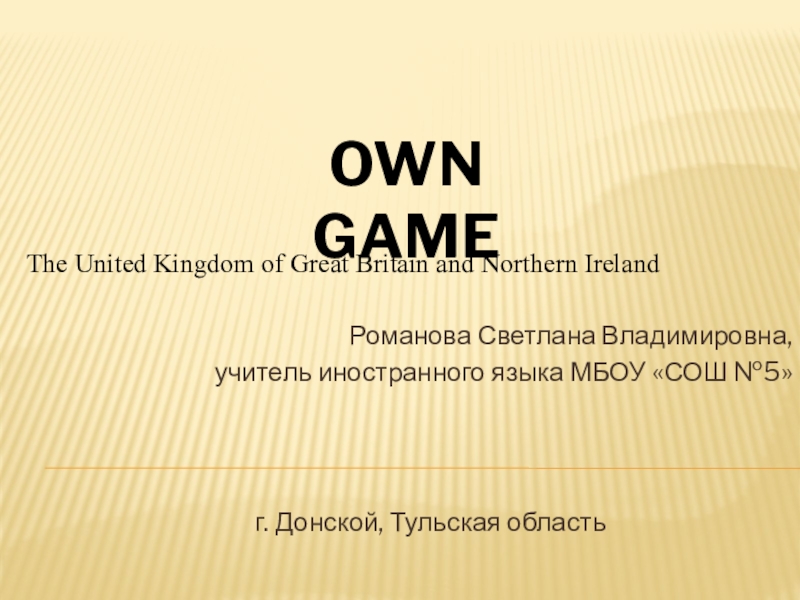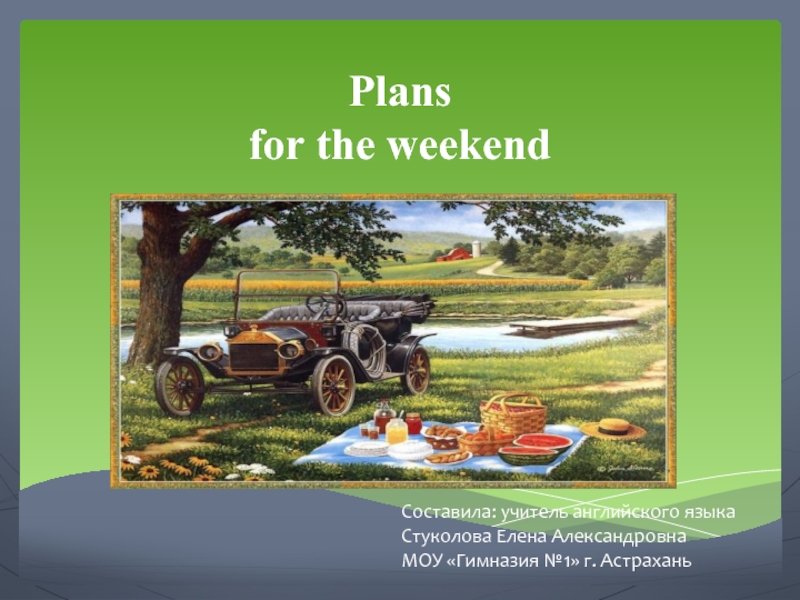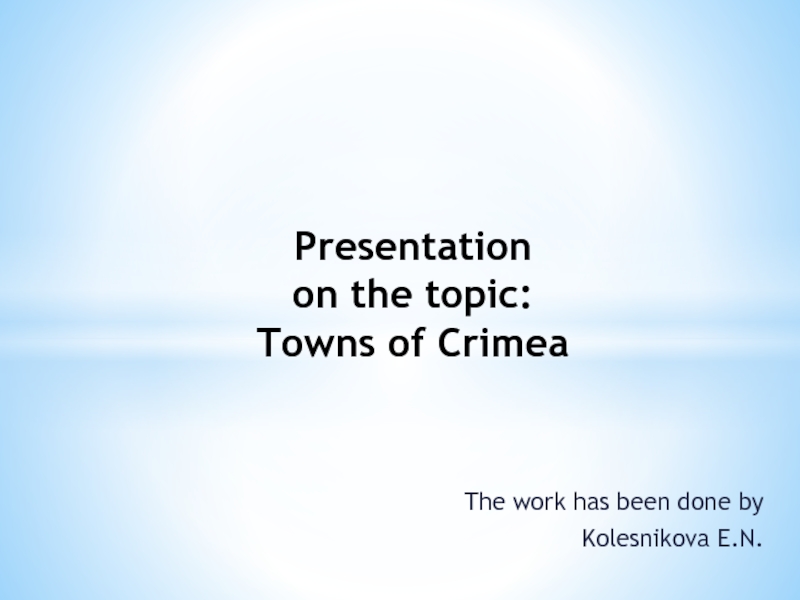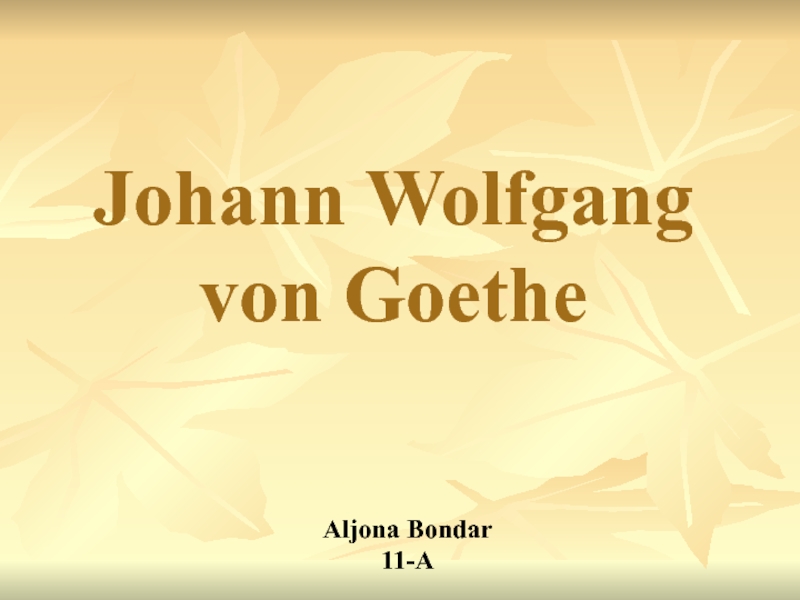Разделы презентаций
- Разное
- Английский язык
- Астрономия
- Алгебра
- Биология
- География
- Геометрия
- Детские презентации
- Информатика
- История
- Литература
- Математика
- Медицина
- Менеджмент
- Музыка
- МХК
- Немецкий язык
- ОБЖ
- Обществознание
- Окружающий мир
- Педагогика
- Русский язык
- Технология
- Физика
- Философия
- Химия
- Шаблоны, картинки для презентаций
- Экология
- Экономика
- Юриспруденция
Вербальное и невербальное общение
Содержание
- 1. Вербальное и невербальное общение
- 2. PlanWhat is Communication?The Communication ProcessVerbal and non-verbal communications
- 3. Communicationis the act of conveying intended meanings
- 4. There are various categories of communication and more than one may occur at any time.
- 5. The different categories of communication include:Spoken or
- 6. The Communication ProcessA message or communication is
- 7. Слайд 7
- 8. Key Differences Between Verbal and Nonverbal CommunicationThe
- 9. 3. In verbal communication, the interchange of
- 10. 5. In verbal communication, the documentary evidence
- 11. ConclusionVerbal and Non-verbal communication are not contradictory
- 12. http://www.skillsyouneed.com/general/what-is-communication.htmlhttp://keydifferences.com/difference-between-verbal-and-non-verbal-communication.html
- 13. Скачать презентанцию
PlanWhat is Communication?The Communication ProcessVerbal and non-verbal communications
Слайды и текст этой презентации
Слайд 5The different categories of communication include:
Spoken or Verbal Communication: face-to-face,
telephone, radio or television and other media.
Non-Verbal Communication: body language,
gestures, how we dress or act - even our scent.Written Communication: letters, e-mails, books, magazines, the Internet or via other media.
Visualizations: graphs and charts, maps, logos and other visualizations can communicate messages.
Слайд 6The Communication Process
A message or communication is sent by the
sender through a communication channel to a receiver, or to
multiple receivers.The sender must encode the message (the information being conveyed) into a form that is appropriate to the communication channel, and the receiver(s) then decodes the message to understand its meaning and significance.
Слайд 8Key Differences Between Verbal and Nonverbal Communication
The major differences between
verbal and nonverbal communication are as under:
The use of words
in communication is Verbal communication. The communication which is based on signs, not on words is Non-verbal communication.There are very fewer chances of confusion in verbal communication between the sender and receiver. Conversely, the chances of misunderstanding and confusion in non-verbal communication are very much as the use of language is not done.
Слайд 93. In verbal communication, the interchange of the message is
very fast which leads to rapid feedback. In opposition to
this, the non-verbal communication is based more on understanding which takes time and hence it is comparatively slow.4. In verbal communication, the presence of both the parties at the place of communication is not necessary, as it can also be done if the parties are at different locations. On the other hand, for an effective non-verbal communication, both the parties must be there, at the time of communication.
Слайд 105. In verbal communication, the documentary evidence is maintained if
the communication is formal or written. But, there is no
conclusive evidence in case of non-verbal communication.6. Verbal communication fulfills the most natural desire of humans – talk. In case of Non-verbal communication, feelings, status, emotions, personality, etc are very easily communicated, through the acts done by the parties to the communication.
Слайд 11Conclusion
Verbal and Non-verbal communication are not contradictory to each other,
but they are complementary as somebody has rightly said, ”
Actions are louder than words.” In short, both goes side by side and helps a human being, to interact and respond to other human beings.Verbal communication is obviously an important part of life as we use words to communicate. But have you ever thought, that a small baby cannot use language or words to speak, but he chooses signs to show his anger, happiness, and sorrow. Similarly, deaf and dumb persons also use sign language for communicating with other people. So, this is the significance of Non-verbal communication in many lives.
